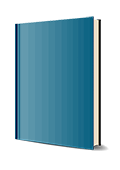Hydrolases in Organic Synthesis
Regio- and Stereoselective Biotransformations

2. Auflage November 2005
XII, 356 Seiten, Hardcover
255 Abbildungen
23 Tabellen
Monographie
Kurzbeschreibung
This second edition reflects recent developments in the use of hydrolases for organic synthesis, providing an overview of the stereoselective reactions of hydrolases and helping to solve synthetic challenges. Contains over one thousand chemical structures and 1,800 references.
Jetzt kaufen
Preis: 155,00 €
Preis inkl. MwSt, zzgl. Versand
Euro-Preise für Wiley-VCH- und Ernst & Sohn-Titel sind nur für Deutschland gültig. In EU-Ländern gilt die lokale Mehrwertsteuer. Portokosten werden berechnet.
- Gedruckte Ausgabe vergriffen -
From reviews to the first edtion:
"Bornscheuer and Kazlauskas have set out, and succeeded, in producing a definitive manual on hydrolytic enzymes (especially lipases, esterases, and proteases) for organic chemists. This is quite simply the best book of its type and can be unreservedly recommended to organic chemists who have an interest in using hydrolytic enzymes in synthesis." (Nicholas J. Turner, University of Edinburgh)
"The book is an indispensable source of information on the use of hydrolases in organic synthesis. The subject matter is very well set out, and the chapters are clearly written and presented from a critical viewpoint. Bornscheuer and Kazlauskas have succeeded admirably in describing the capabilities and limitations of the use of hydrolytic enzymes and in critically evaluating them. No library should be without the book." (Fritz Theil, WITEGA Angewandte Werkstoff-Forschung GmbH, Berlin)
The second edition of this extremely successful and well-proven book presents recent developments in the use of hydrolases for organic synthesis, reflecting in particular the enormous progress made in enzyme discovery and optimization with a new chapter on "Protein Sources and Optimization of Biocatalyst Performance".
The renowned authors survey the stereoselective reactions of hydrolases, especially lipases, esterases and proteases, giving researchers an overview of what has worked in the past so that they can judge how to solve their own synthetic problems. In total, the book contains over one thousand chemical structures, rounded off by some 1,800 invaluable references.
DESIGNING ENANTIOSELECTIVE REACTIONS
Kinetic Resolutions
Asymmetric Syntheses
CHOOSING REACTION MEDIA: WATER AND ORGANIC SOLVENTS
Hydrolysis in Water
Transesterifications and Condensations in Organic Solvents
Other Reaction Media
Immobilization
PROTEIN SOURCES AND OPTIMIZATION OF BIOCATALYST PERFORMANCE
Accessing Biodiversity
Creating Improved Biocatalysts
Catalytic Promiscuity in Hydrolases
LIPASES AND ESTERASES
Availability, Structures and Properties
Survey of Enantioselective Lipase-Catalyzed Reactions
Chemo- and Regioselective Lipase-Catalyzed Reactions
Reactions Catalyzed by Esterases
PROTEASES AND AMIDASES
Occurrence and Availability of Proteases and Amidases
General Features of Subtilisin, Chymotrypsin, and Other Proteases and Amidases
Structures of Proteases and Amidases
Survey of Enantioselective Protease- and Amidase-Catalyzed Reactions
PHOSPHOLIPASES
Phospholipase A1
Phospholipase A2
Phospholipase C
Phospholipase D
EPOXIDE HYDROLASES
Introduction
Mammalian Epoxide Hydrolases
Microbial Epoxide Hydrolases
HYDROLYSIS OF NITRILES
Introduction
Mild Conditions
Regioselective Reactions of Dinitriles
Enantioselective Reactions
OTHER HYDROLASES
Glycosidases
Haloalcohol Dehalogenases
Phosphotriesterases
Organic Process Research & Development Journal
"The outline of the book is excellent, and the figures and tables are of a perfect quality throughout. [...] Bornscheuer and Kazlauskas have now with the 2nd edition clearly evidenced that their book on hydrolytic enzymes is and will continue to be one of the key standard references in the field of biotransformations."
ChemBioChem
Romas Kazlauskas studied chemistry at the Massachusetts Institute of Technology (PhD) and Harvard University (postdoc with G. M. Whitesides). He worked at General Electric Company (1985-1988) and McGill University,
Montreal, Canada (1988-2003) and is currently an associate professor of Biochemistry, Molecular Biology, and Biophysics at the University of Minnesota, Twin Cities. He is an expert in enzyme selectivity, especially
enantioselectivity. His current work focuses on the design of new enzymatic reactions and the molecular basis of enzyme enantioselectivity.


